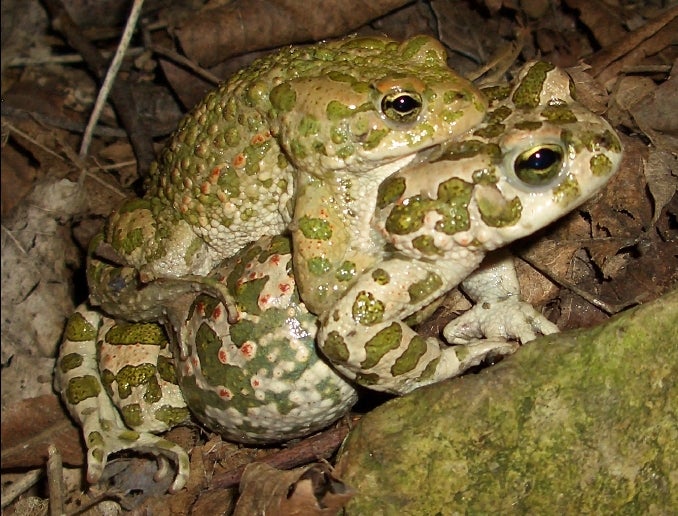The mechanism of sex determination in toads
July 01, 2024Biologists from the National University of Singapore (NUS) and the Leibniz Institute of Freshwater Ecology and Inland Fisheries (IGB) have identified a gene locus responsible for sex determination in the European green toad. This finding reveals the second known genetic mechanism for sex differentiation in amphibians.
In most vertebrate animals, sex determination relies on the presence of distinct sex chromosomes, resulting in the development of two separate biological sexes – males and females. However, the mechanism by which amphibians determine their sex has remained largely unknown. Unlike other vertebrates, amphibians often possess sex chromosomes that are difficult to differentiate, with either males having XY chromosomes or females having ZW chromosomes. Additionally, amphibian genomes are usually significantly larger than those of humans, which has made it difficult to identify multiple sex-determining genes. Until now, only a single sex-determining gene had been identified in the commonly studied laboratory species Xenopus, also known as the African clawed frog. The question of whether other genes play a role in sex differentiation across the more than 8,600 amphibian species has remained unclear.
In a study, research teams from the Department of Biological Sciences at NUS led by Associate Professor Christoph WINKLER and the IGB in Berlin, Germany led by Dr Matthias STÖCK have identified and characterised a novel gene locus for sex determination in the European green toad. By sequencing and analysing the complete genomes of a female and a male green toad, the researchers were able to identify structural differences between the otherwise very similar X and Y chromosomes. This led to the identification of a sex-determining locus that comprises a long non-coding RNA (lncRNA) located in the 5′-regulatory region of the bod1l gene. This Y-specific non-coding RNA is only expressed in males, suggesting that this locus could trigger male sex differentiation. Interestingly, the identified sex-determining gene locus was also detected in several other related green toad species, suggesting a common mechanism at play.
The research findings were published in the journal Nature Communications.
In the next step, the researchers plan to further validate their results using the CRISPR/Cas9 technique to specifically control the expression of the identified non-coding RNA and bod1I gene.
Dr Stöck said, “Genetic sex determination in amphibians is still a major knowledge gap. However, it is very important to understand the genetic regulation of reproduction in amphibians because, as semi-aquatic creatures, they react very sensitively to hormonally active environmental pollutants, the so-called endocrine disruptors, before and after metamorphosis.”
“Further investigations into the function of the newly identified locus will provide important insights into the epigenetic control of sex differentiation, which may also be relevant for other animal species,” added Prof Winkler.

Figure shows a pair of European green toads, male on top, female below. [Image credit: Dr Matthias Stöck]
Reference
Kuhl H; Tan WH; Klopp C; Kleiner W; Koyun B; Ciorpac M; Feron R; Knytl M; Kloas W; Schartl M; Winkler C*; Stöck M*, “A candidate sex determination locus in amphibians which evolved by structural variation between X- and Y-chromosomes” Nature Communications 15(1) Article number: 4781 DOI: 10.1038/s41467-024-49025-2 Published: 2024.


